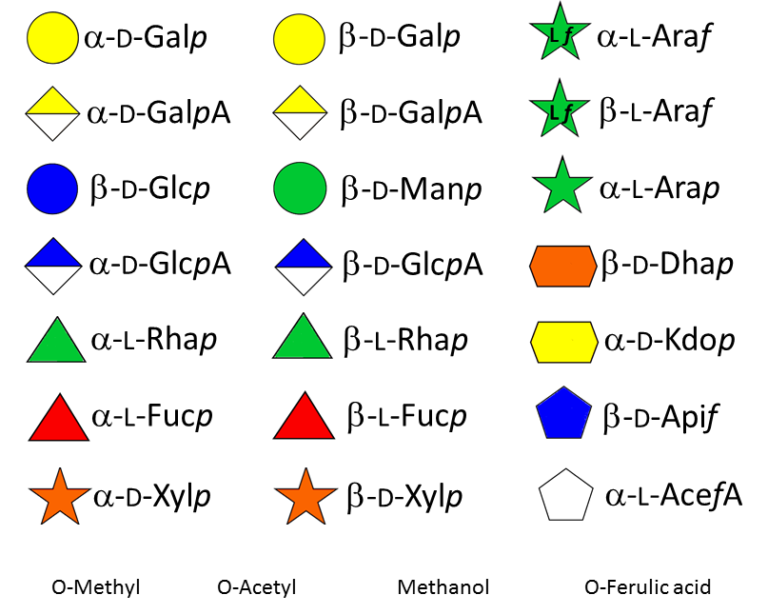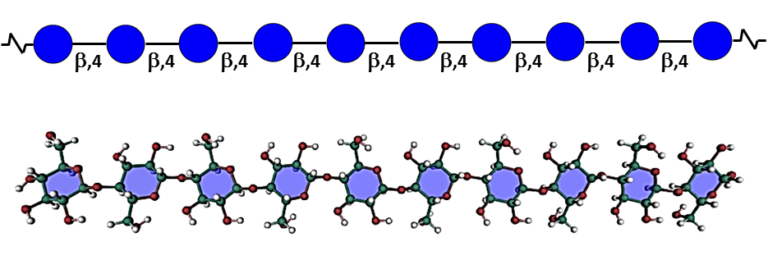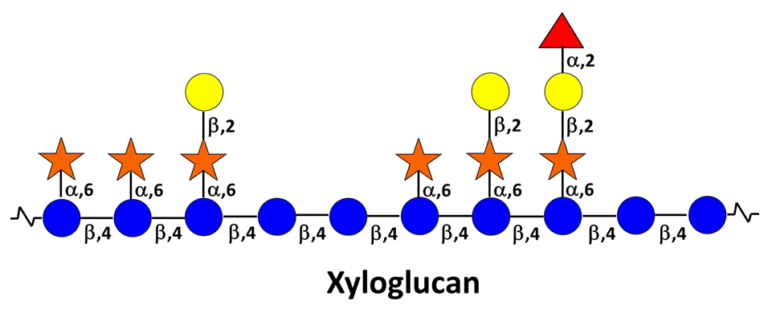Introduction
(A hard-copy is available at :http://www.glycopedia.eu/IMG/pdf/the_plant_cell_walls.pdf) Observing a section of cork with a microscope that he had himself devised, Robert Hooke,
Jean-Paul Joseleau & Serge Perez
(A hard-copy is available at :http://www.glycopedia.eu/IMG/pdf/the_plant_cell_walls.pdf) Observing a section of cork with a microscope that he had himself devised, Robert Hooke,

The constituents of the plant cell walls vary depending on the stage of development and the type of tissue. In

During photosynthesis plants fix the carbon from carbon dioxide into sugars which are incorporated into complex polysaccharides. This process makes

Cellulose This is the most abundant natural polymer on earth. Cellulose accounts for 15–30 % dry weight of the primary cell

Xyloglucan (XG) They consist of a β-(1-4)-linked D-glucopyranosyl backbone carrying various side chains of D-xylopyranosyl-α-1-, D-galactopyranosyl-β-(1-2)-D-xylopyranosyl-α-1- , L-arabinofuranosyl-(1-2)-D-xylopyranosyl-α-1-, and (except

The thick secondary walls are laid down only after the cambial cells have stopped enlarging. They have a layered structure

Whether primary or secondary, the plant cell walls are built on the cellulose network organized around the cellulose microfibril unit
The plant cell walls can be viewed as a supramolecular complex of polymers intertwined in an organized manner. How the
Jean-Paul Joseleau Jean-Paul Joseleau received his education in chemistry at the University of Grenoble (1959-1962), and obtained a Ph.D. degree